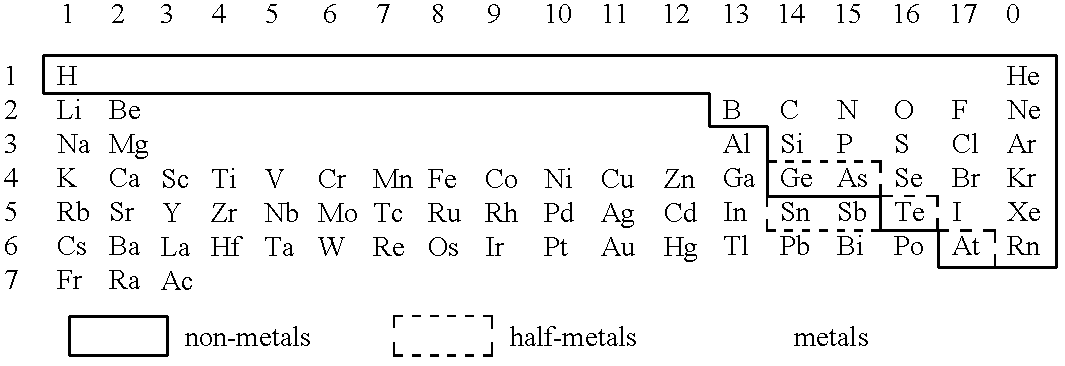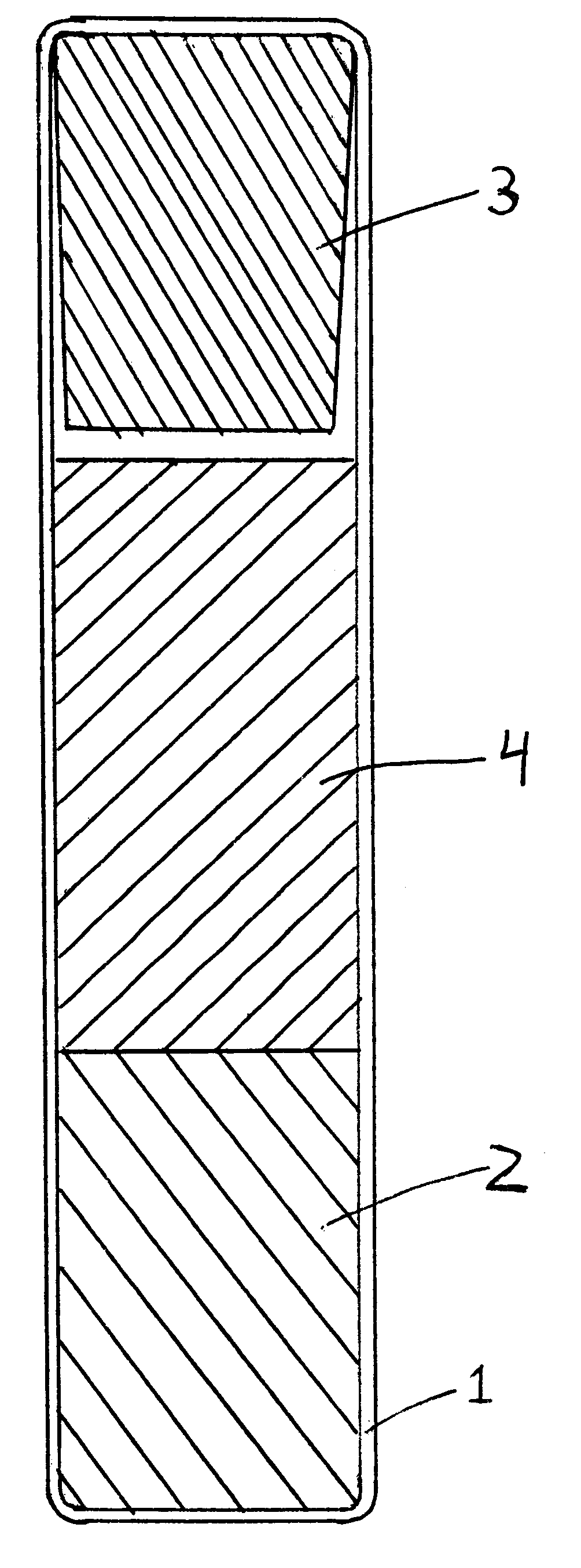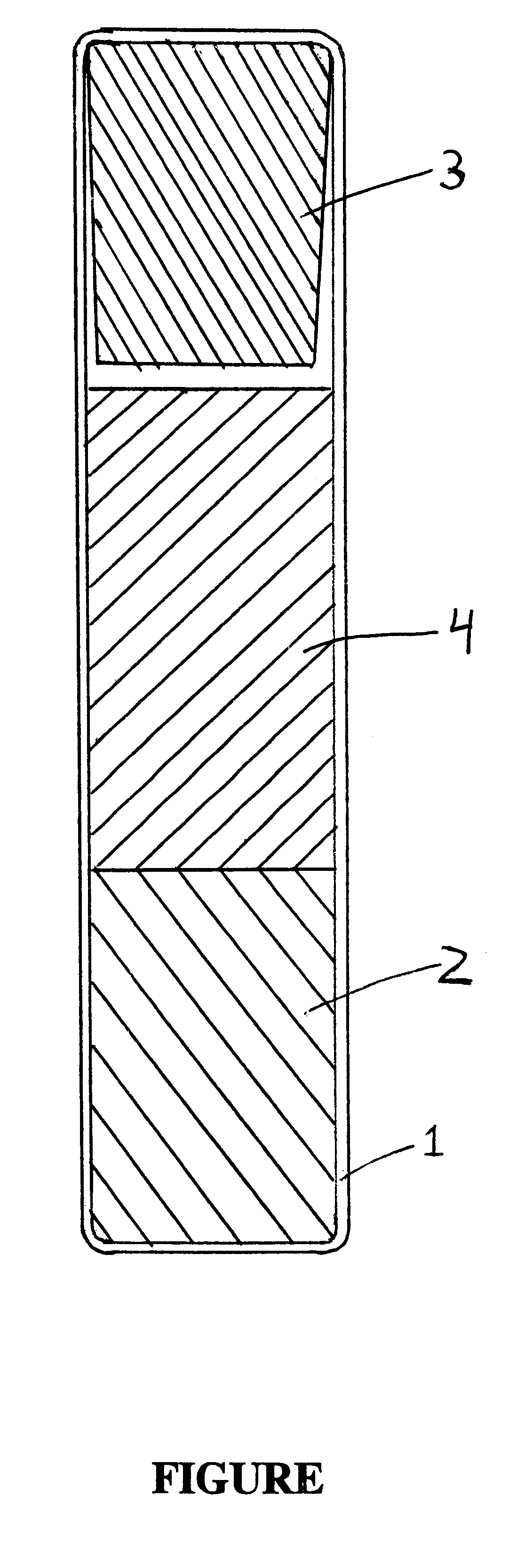Pyrotechnical charge for detonators
a technology of pyrotechnical charge and detonator, which is applied in the direction of looms, explosives, weaving, etc., can solve the problems of limiting the choice of suitable compositions for each of said charges, not revealing or even suggesting the use of our specific ignition charge,
- Summary
- Abstract
- Description
- Claims
- Application Information
AI Technical Summary
Benefits of technology
Problems solved by technology
Method used
Image
Examples
example 2
Steel tubes having an outside diameter of 6,3 mm and a wall thickness of 0,5 mm and a length of 10 mm were used. One end of said tubes was open and in the other end there was a diaphragm with a hole having a diameter of 1 mm.
Pyrotechnical charges for use as ignition charges were pressed into said diaphragm, and then PETN explosives were pressed in.
Three types of slag-less inversion compositions were used, viz 40% of Al+60% of Fe.sub.2 O.sub.3 ; 20% of Al+80% of Bi.sub.2 O.sub.3 ; and 30% of Al+70% of Cu.sub.2 O, all percentages being weight percentages, the results of the experiments were that all of the charges shows approximately the same ability to ignite secondary PETN explosives. Generally it can be said that the best ignition is obtained at a PETN density of 1,3 g / m.sup.3 and that the limit were ignition is impaired is at a density of about 1,5 g / m.sup.3.
example 3
Into 20 initiating elements in the form of aluminium tubes, each having a length of 20 mm and an internal diameter of 3 mm and an outside diameter of 6 mm, an ignition charge consisting of 20% by weight of Ti+80% by weight of Bi.sub.2 O.sub.3 was pressed to a column height of 5 mm. Adjacent thereto a column of PETN with a density of 1.3 g / cm.sup.3 was pressed.
In the same way 20 initiating elements were manufactured with the exception that the ignition charge (i.e. 20% of Ti+80% of Bi.sub.2 O.sub.3) also contained 8% by weight of Fe.sub.2 O.sub.3 as an additive.
This experiment showed that all 40 detonators containing said initiating elements worked excellently with a qualitative detonation of the base charge.
example 4
The influence of the additive Fe.sub.2 O.sub.3 on an ignition-charge consisting of 20% by weight of Ti+80% by weight of Bi.sub.2 O.sub.3 concerning the sensitivity to electrostatic sparks was examined in accordance with standard testing methods.
The sensitivity of the mere charge of 20% of Ti+80% of Bi.sub.2 O.sub.3 was -0.5 mJ.
The addition of 2-10% by weight of Fe.sub.2 O.sub.3 to said charge reduced the sensitivity of the charge to a considerable extent (-2-5 mJ) and has an insignificant influence on the operability of the ignition charge.
PUM
 Login to View More
Login to View More Abstract
Description
Claims
Application Information
 Login to View More
Login to View More - R&D
- Intellectual Property
- Life Sciences
- Materials
- Tech Scout
- Unparalleled Data Quality
- Higher Quality Content
- 60% Fewer Hallucinations
Browse by: Latest US Patents, China's latest patents, Technical Efficacy Thesaurus, Application Domain, Technology Topic, Popular Technical Reports.
© 2025 PatSnap. All rights reserved.Legal|Privacy policy|Modern Slavery Act Transparency Statement|Sitemap|About US| Contact US: help@patsnap.com



